We"re still waiting for the new Mac Pro (and don"t even know which year it"ll be launched in), but in the meantime Apple is placating its pro users with this high-powered slab of processing muscle.
The iMac Pro is available with anywhere from eight to 18 cores, and from 32GB to 128GB of RAM. The thermal architecture, so problematic on the Mac Pro, has been redesigned with "dual blowers" for a claimed 80 percent increase in thermal capacity. And the machine looks great too, with the current "pregnant iMac" design given a new and rather lovely Space Grey finish, and matching peripherals.
We couldn"t wait to get our hands on the new system and put it through its paces in our most rigorous speed and graphics benchmark tests. Welcome to our iMac Pro review.
If you decide this machine is right for your needs, you can spec your iMac Pro on Apple"s website - click here for the UK store and here for the US store. And for more general advice, remember to check out our Mac buying guide.
Design & build quality
Picture the 2017 iMac 27in (we"ll be making a number of comparisons with the i7 edition of this machine, incidentally); now imagine it in Space Grey. That, in most external respects, is what you get with the Pro.
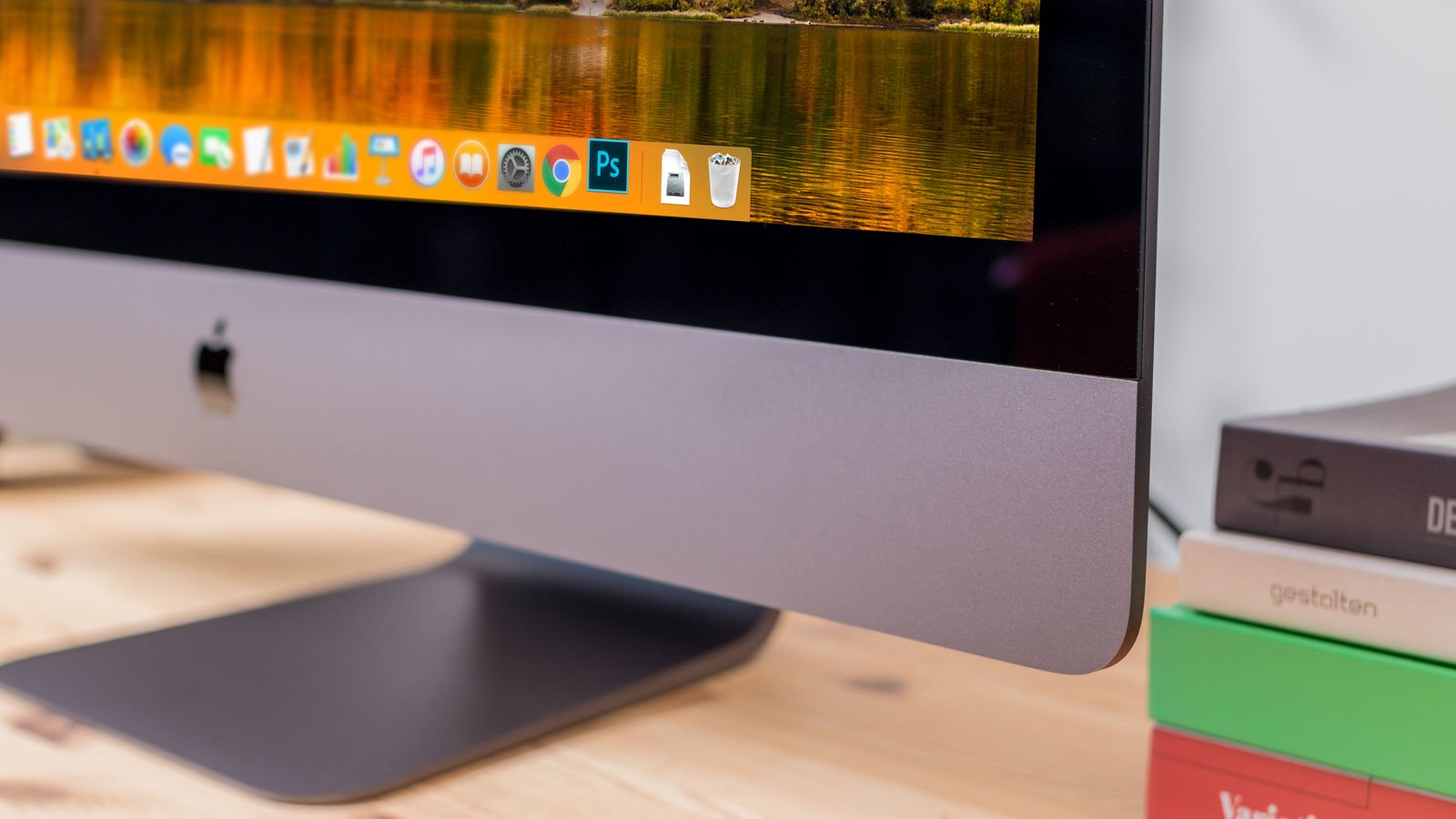
It"s an attractive, classic design. There are razor-thin edges around the monitor, giving the illusion of a flatscreen device, but most of the innards are concealed within a gently bulging belly on the back.
We like the reassuring heft and minimalist look of the stand, too, which is made from a single bent piece of aluminium of subtly varying thickness (thickest at the bend and tapering away as it approaches the user) and featuring a cleverly simple cutout to keep your power cable tidy and tucked away. And while it could never be described as lightweight (it"s 9.7kg) or mistaken for a portable device, the iMac Pro"s balance and shape are such that it"s surprisingly easy to pick up and lug to another room.
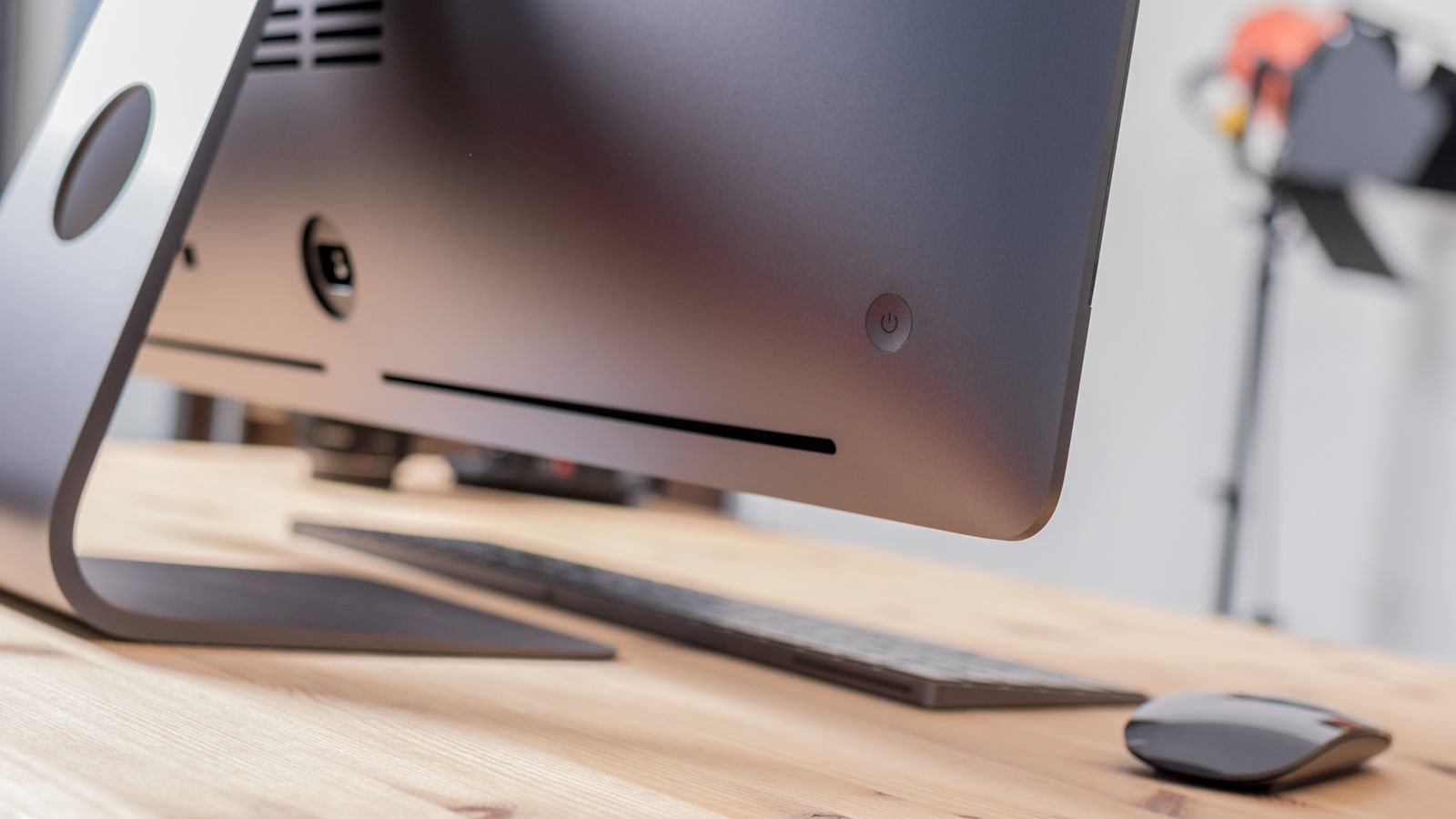
This is all old news, of course, since we"ve had this design in the iMac range for several years. So is the new colour worth talking about?
Colour finish
We"re going to be drilling down into hardcore processing performance in this article so it"s tempting to disregard cosmetic changes like colour finish; but this would be a mistake. The Space Grey finish looks superb, and given that you"re going to be looking at this object for multiple hours a day that isn"t an unimportant factor. It looks modern, and classy, and still unmistakably Apple. It will look great in a studio.
The Space Grey Magic Keyboard, Magic Mouse 2 and Magic Trackpad 2 that are available with the Pro are also stunning to look at, although the mouse in particular is a little less stunning to use; it"s so prone to collecting fingerprints that art director made us work with a substitute until we"d finished doing photography. And hilarious though it might seem to normal people, the bundled black Lightning cable that you use to charge the peripherals has very much tickled the fancy of Apple fans.
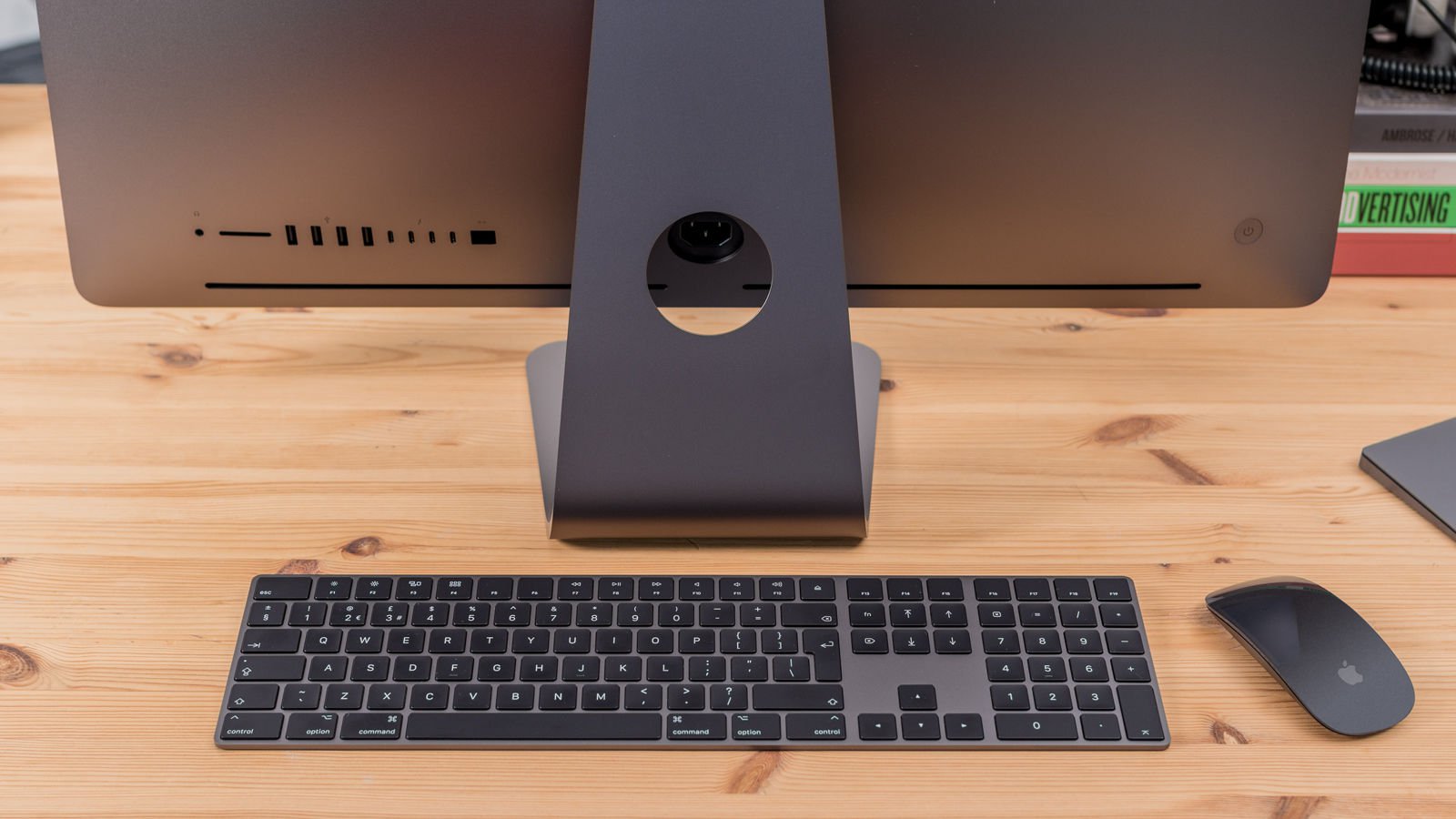
Thermal design
In its mea culpa to the creative and design community who depend on the Mac Pro, Apple admitted that machine"s thermal design was unsatisfactory, making it next to impossible to upgrade. The company expected the industry to move in the direction of multiple GPUs, whereas the trend was actually towards larger single GPUs, which generate more heat and which the Mac Pro"s trashcan design is unable to deal with thermally.
The iMac Pro should have no such problems. Apple says it offers 75 percent more airflow than the 27in iMac (thanks to the "dual blowers") and 80 percent more system thermal capacity.
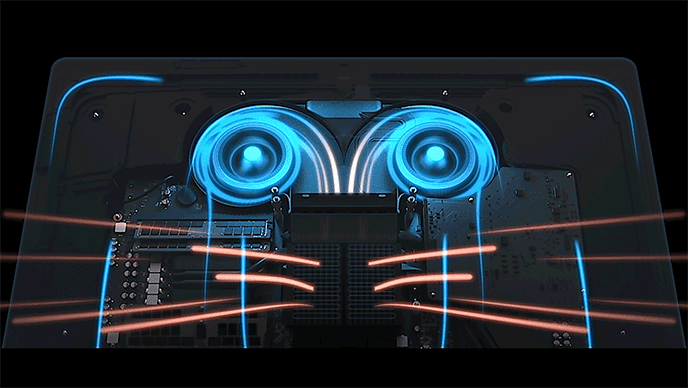
The significance and success of this redesign is hard to estimate at launch, since the Mac Pro seemed fine initially and the problems emerged only later. Looking at the matter subjectively, however, we can report that when using the Unigine Valley graphics test on a loop (with Extreme HD settings) the GPU topped out at 91 degrees Celsius.
That"s a little on the high side for what we"re used to, and a touch warmer than the iMac 2017, which peaked at 87 degrees while admittedly pumping out significantly lower framerates. But it didn"t cause any detectable slowdowns, and there was very little noise from the fans.
All the parts of the casing that are reachable from the front remained cool to the touch, although naturally there was a decent flow of hot air pumping out of the vent.
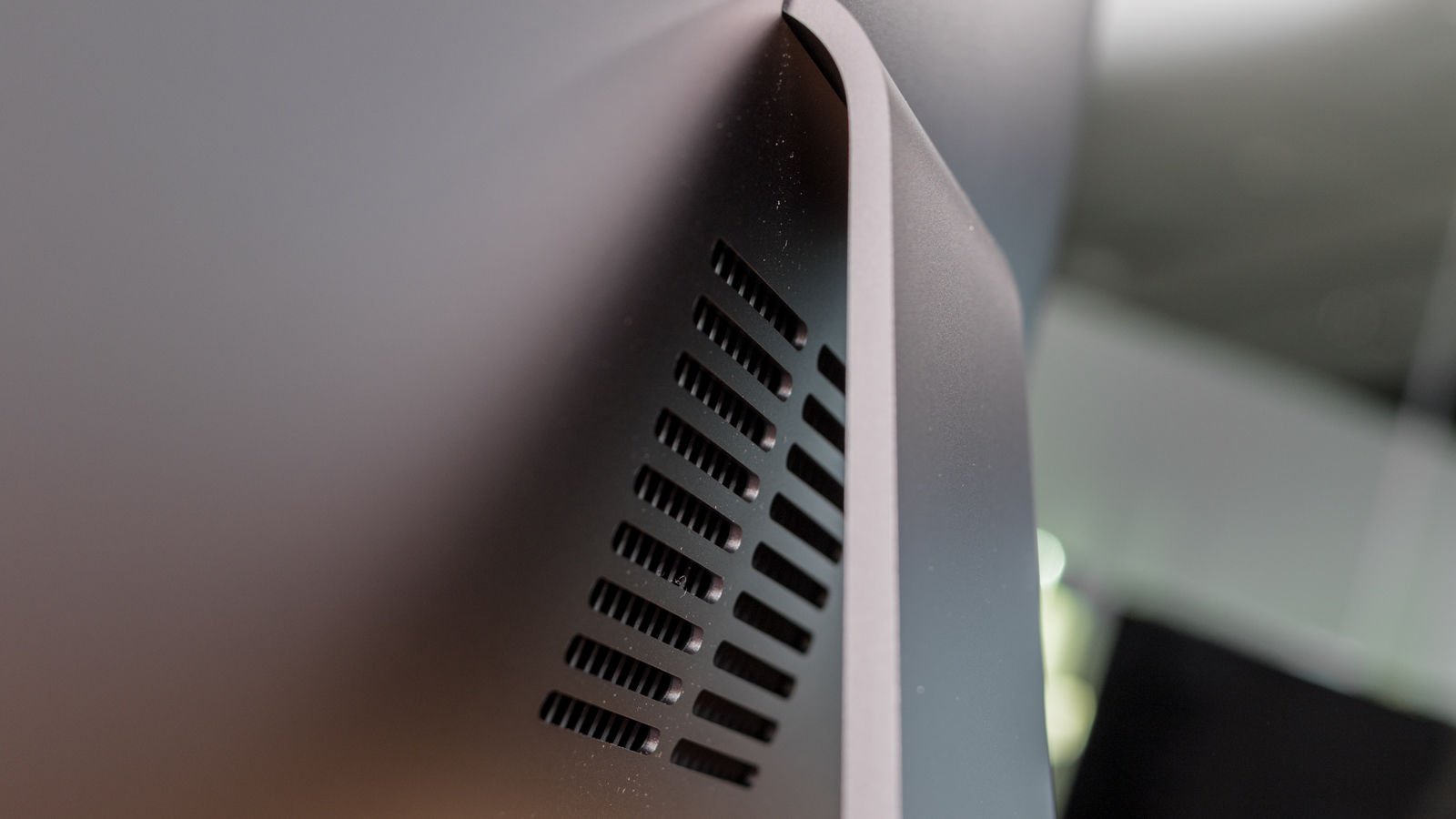
Ports
The Pro has a solid bank of ports round the back: four each of USB 3 and Thunderbolt 3/USB-C. In this respect it sits neatly between the 27in iMac (which has four and two) and the trashcan Mac Pro (four and six, although the latter are only Thunderbolt 2).
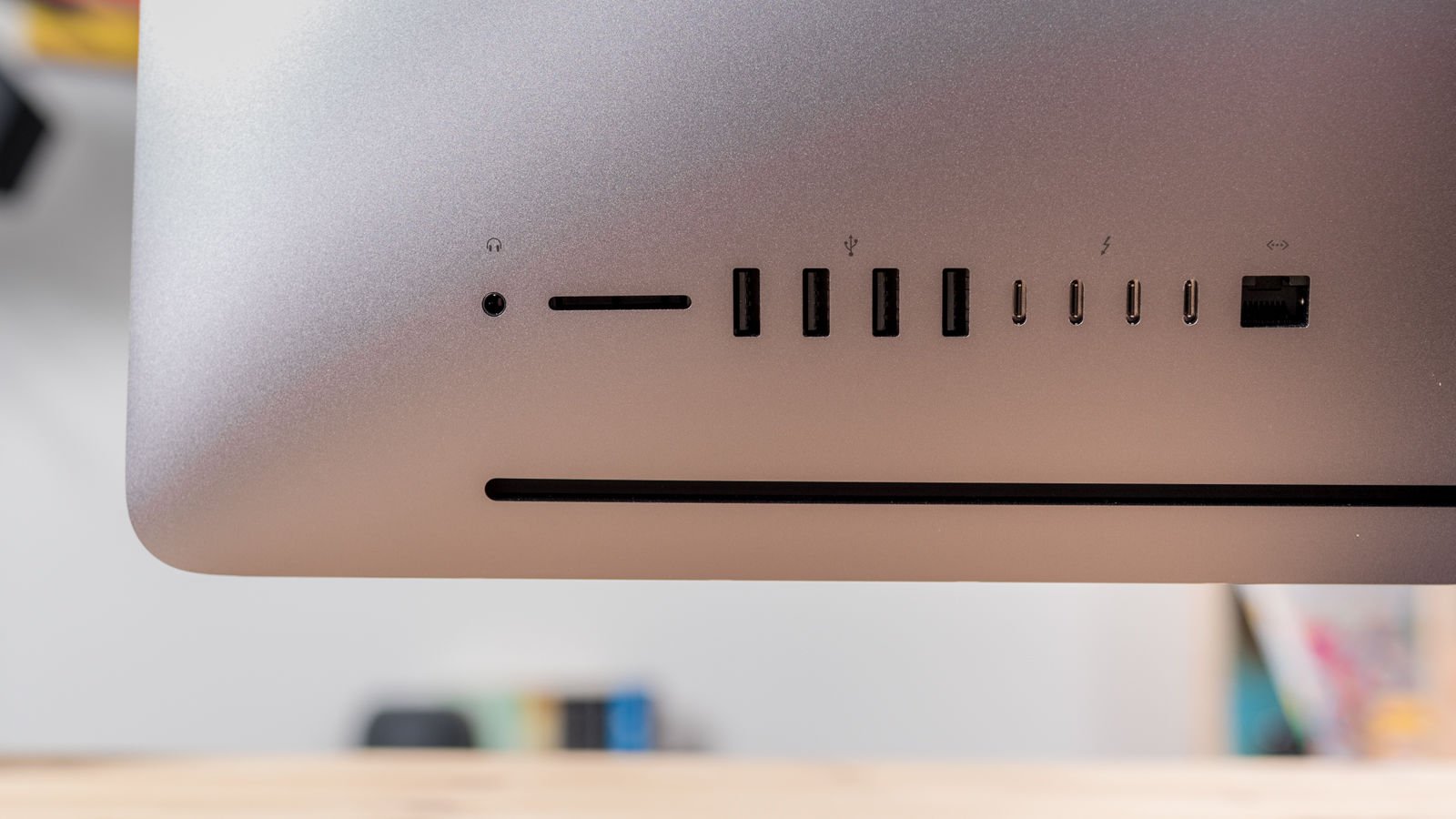
There are four microphones on the Pro"s chassis: one on the top edge, just above the FaceTime camera (like on the 2015 iMac), one either side of the camera, and one on the back. The 2017 iMac has only one, on the bottom edge.
Screen
The display is the same Retina 5K 27in unit you get with the larger of the 2017 iMac range. That means a whopping resolution of 5120 x 2880, claimed support for a billion colours, and 500 nits brightness. Subjectively it"s beautiful to look at: crisp, vivid and bright.
Our colleagues at Digital Arts have noted that Apple"s choice of aligning it to the P3 colour space - as used in digital cinema - rather than the Adobe RGB colour space makes more sense if you consider that it"s more for those creating motion content. It can only output 91% of Adobe RGB - which is roughly the same as the MacBook Pro - but the average buyer is unlikely to mind.
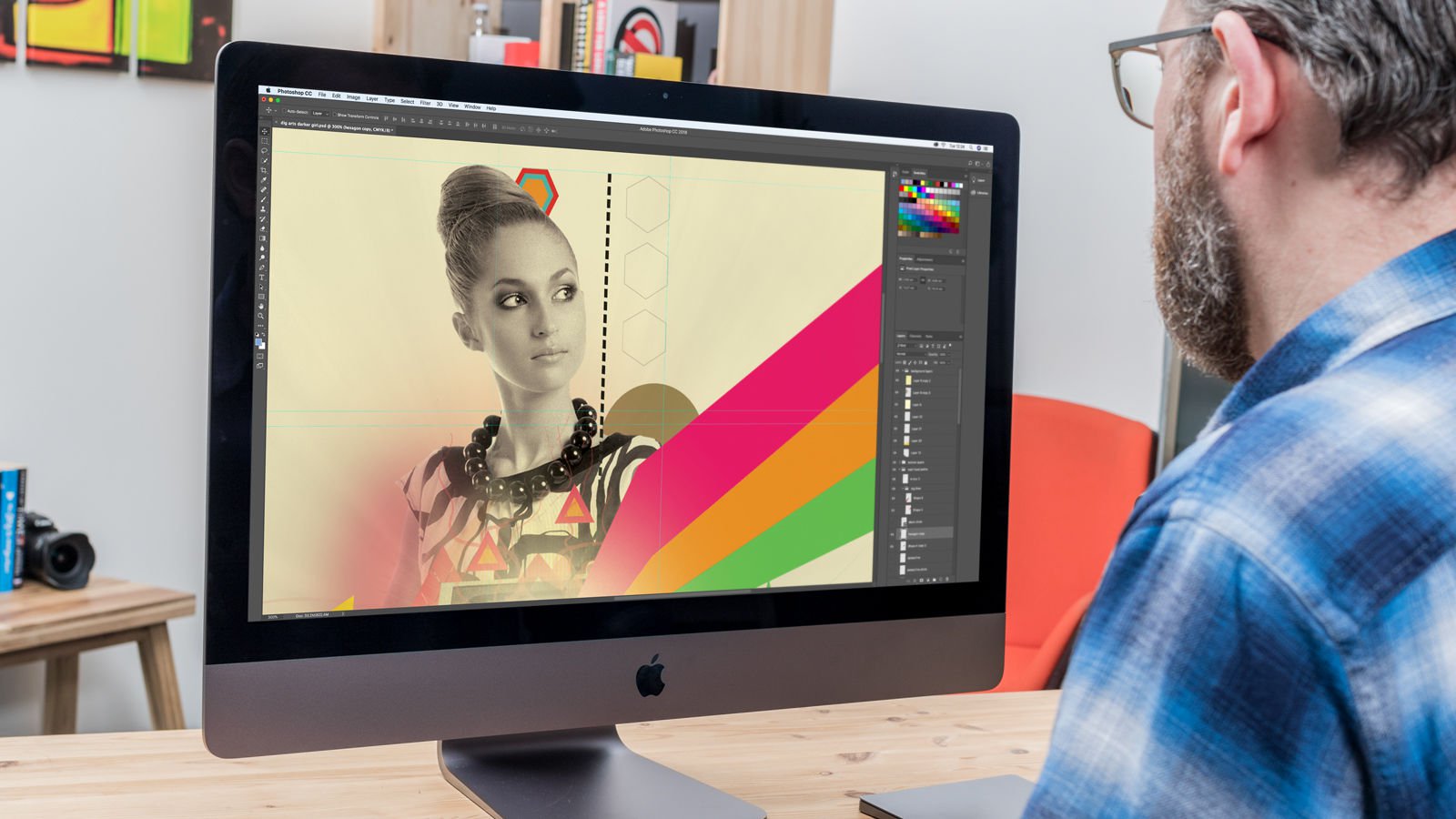
Benchmarking
The iMac Pro is a powerhouse of a system. We reviewed the 10-core model with 128GB RAM and the Vega 64 GPU with 16GB of memory; Apple has been keen to stress that in terms of both processor and GPU chips the new iMac Pros are the fastest machines it"s released.
With all this power at our fingertips, we were excited to put it through our battery of tests. Here"s what we found out.
Before we get into the numbers, please note that the i7 iMac we used for comparison purposes had not been patched for Meltdown and Spectre processor bugs, while the iMac Pro had. Intel and Microsoft say these patches can slow down a system, and therefore the iMac is theoretically at a slight advantage.
Apple"s patch doesn"t seem to adversely affect performance on any of the Macs we"ve tested, and we do not anticipate any significant change to our analysis, but for scrupulous accuracy we will shortly update the following charts.
Geekbench 4.2 (64bit)
The iMac Pro averaged 5,424 in the single-core segment of Geekbench 4.2"s CPU test, and a monstrous 36,901 in multicore. This is a test of pure processing speed, and higher scores are better.
The Pro"s results dwarf the numbers we saw with the 3.4GHz version of the 27in iMac (2017) in the multicore segment, although that device managed a shade more in single-core: it scored 5,507 and 17,567 respectively.
This category of performance is niche to say the least, and you"re unlikely to see much difference between those two machines in anything but the most processor-intensive applications - although the gap will become more readily apparent in the years to come. But even now video editors, visual effects artists and 3D illustrators, among others, will appreciate the extra processing welly.
AJA System Test Lite
We used AJA System Test Lite next. This benchmark evaluates drive performance, and again higher scores are better. (We tested using the settings 5K RED, 4GB, single file and disk cache disable.)
The iMac Pro recorded an average of 3,149 MBps write speed (an exceptional result, and far higher than the iMac"s 1,985 MBps) and 2,636 MBps read speed (roughly the same as the iMac"s 2,606 MBps).
Apple predicted impressive drive performance for the iMac Pro partly because it"s split into two drives (512GB each in the starting config) for greater throughput. You"re also automatically given an SSD: there"s no option for a moving hard drive.
Unigine Valley
We ran the iMac Pro (and 2017 iMac) in Unigine Valley Benchmark 1.0, which evaluates performance and stability under high graphical workloads.
Using the Extreme HD presets, it recorded an impressive average framerate of 60.2fps (max 106.8fps, min 30.5fps) and scored 2,520 points. That compares to the iMac"s average 39fps and score of 1,633.
You should note that while it"s capable of high framerates, this isn"t a gaming machine by any means, and won"t provide value for money if that"s what you"re looking for.
As mentioned above in the thermal design section, the Pro"s GPU got pretty warm during this stress testing, peaking at 91 degrees Celsius, but didn"t display any signs of distress or slowdown. The thermal system coped fine.
Cinebench
Our colleagues at Digital Arts ran the iMac Pro in Cinebench, a benchmark suite which tests a system"s ability to render 3D scenes and stresses both CPU and GPU. They used the test, in which higher scores are better, to compare against the iMac 2017 and the late-2015 iMac 5K, too.
The Pro scored 135 in the OGL test, and 2065 in the render: both very high scores, albeit not the highest we"ve seen (the Lenovo ThinkStation P900 tops that particular list). The iMac 2017 scored 126.93 and 892 respectively, and the late-2015 iMac 5K 94.74 and 595.
After Effects
Again, our thanks to Digital Arts for this set of test results, using Adobe After Effects 2018 (and in most cases using the CineWare plugin) to evaluate the iMac Pro"s ability to complete complex graphical processing tasks. These are times taken to finish the tasks, so in this case lower scores are better.
In seven out of eight tests, the iMac Pro recorded a time less than half that of the iMac (which was noticeably faster in turn than the iMac 2015, as you"d expect), but we"d like to focus on the eighth test, Cinema 4D. This stresses the GPU, processor, disk input and output and RAM, and provides the clearest overall assessment of a system"s capabilities.
In this test the Pro took 4 min 27 sec; the iMac 2017 took 6 min 16 sec and the iMac 2015 took 9 min 27 sec.
Here"s a selection of the results we got for the three machines.
Specs
Here are the specs of the iMac Pro. Where multiple built-to-order options are available, an asterisk indicates the model tested.
- 8-core Intel Xeon W processor, 3.2GHz, Turbo Boost up to 4.2GHz, 19MB cache (configurable to 10-core 3GHz*, 14-core 2.5GHz or 18-core 2.3GHz)
- 32GB 2666MHz DDR4 RAM (configurable to 64GB or 128GB*)
- Radeon Pro Vega 56 graphics processor, 8GB of memory (configurable to Vega 64 with 16GB*)
- 1TB of SSD storage (configurable to 2TB* or 4TB)
- Built-in 27in "Retina" 5K display, 5120 x 2880 resolution, 500 nits brightness, Wide colour (P3)
- 1080p FaceTime HD camera
- Stereo speakers, four microphones
- Ports: 4x USB 3, 4 x Thunderbolt 3/USB-C, SDXC, ethernet, 3.5mm headphone jack
- 802.11ac Wi-Fi, Bluetooth 4.2
- 65cm x 51.6cm x 20.3cm (depth includes stand); 9.7kg
Pricing
The iMac Pro starts at £4,899/$4,999 for the base configuration, but if you select every possible upgrade (including bundled copies of Final Cut and Logic Pro) you can theoretically spend as much as £13,006.98/$13,926.98.
Here"s what the various custom options will add to the price. You can spec your iMac Pro on Apple"s website - click here for the UK store and here for the US store.
Processors
The standard config gets you 8 cores, but you can upgrade to 10 (an extra £720/$800), 14 (+£1,440/$1,600) or 18 (+£2,160/$2,400).
RAM
You start with 32GB RAM, but you can upgrade to 64GB (+£720/$800) or 128GB (+£2,160/$2,400).
Storage
The basic config gets you a 1TB SSD; 2TB adds £720/$800, or 4TB costs £2,520/$2,800.
Graphics card
Upgrading from the standard Vega 56 to a Vega 64 costs an extra £540/$600.
Peripherals & accessories
The basic spec includes a Magic Mouse 2 in Space Grey. Replacing this with a Magic Trackpad 2 adds £50/$50 to the price; if you want the mouse and the trackpad you"ll have to pay an extra £149/$149.
Apple also offers a VESA mount adapter kit. This costs an extra £79/$79.
Software
Adding a bundled copy of Final Cut Pro X adds £299/$299 to the price. Logic Pro X adds £199/$199.
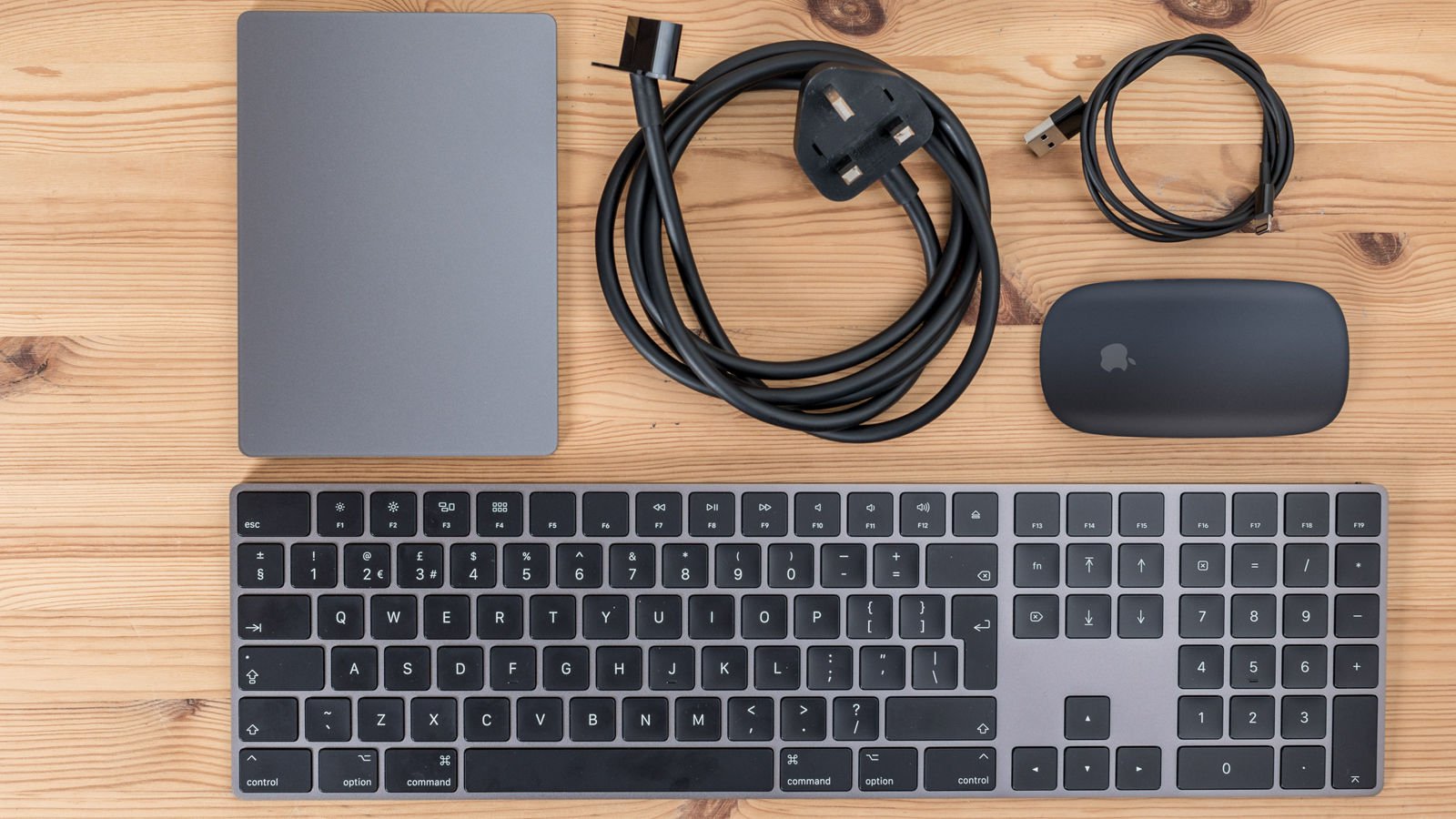
No comments:
Post a Comment